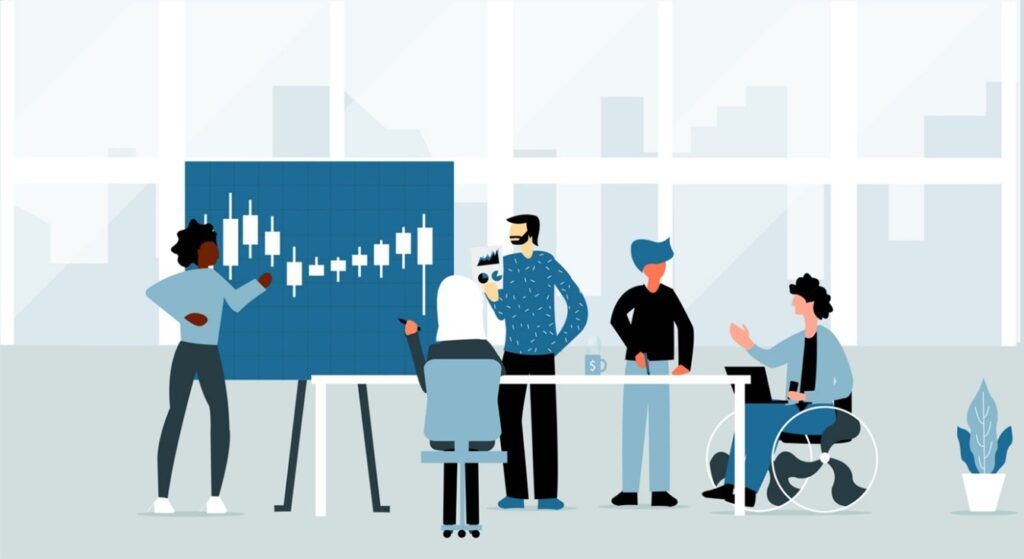Practices to Maximize your DEIA Learning Curriculum
February 8, 2024 in Culture, Diversity & Inclusion, Employee Engagement & Resiliency, IDEA
By Christine Gundermann
Over the past few years, the advancement of diversity, equity, inclusion, and accessibility (DEIA) has been at the forefront of many minds. Despite this, unfortunately “checking the box” on implementing DEIA initiatives continues to be a pervasive issue. Instead of making meaningful and systemic changes to policies, processes, and programs, organizations often complete performative, compliance-focused, and surface-level DEIA actions. For instance, they may post on social media about DEIA without having actions to drive organizational change or provide mandatory, one-time DEIA training instead of implementing broad and ongoing DEIA programming.

Not only is advancing DEIA the right thing to do, DEIA and related constructs (e.g., psychological safety) positively impact employee engagement(1), increase creativity and innovation(2), and encourage employee retention(3). Therefore, it is essential that leaders commit to strategic, and sometimes disruptive actions that weave DEIA into every fiber of their organization.
For the past year, FMP has partnered with a large federal agency to strategically advance DEIA across their policies, processes, and programs and mobilize employees to embrace contributing to DEIA. During this time, our team curated their first agency-wide DEIA Learning Curriculum. This comprehensive 10-course curriculum covers topics such as DEIA Fundamentals, Allyship, and Creating an Inclusive Environment. This curriculum has established DEIA as a core component of employee development and has paved the way for a culture where employees value and live DEIA each day.
In this blog, we share our best practices and offer real-world insights on developing and implementing DEIA curricula to serve as a foundation for the strategic advancement of DEIA.
Be Responsive to Each Employee’s DEIA Journey
Regardless of your organization, employees have varied experiences, opinions, and exposure to DEIA. As such, think of employees’ engagement with DEIA as an ever-changing journey, where each employee may be at a different junction. Some employees may still be gaining awareness of what DEIA even means, while other employees may already be actively serving as DEIA allies. It is critical to have a comprehensive understanding of employees and their DEIA journeys so you can provide targeted learning that best meets their learning needs.

Begin by leveraging insights from internal DEIA practitioners to understand DEIA learning goals, the workforce’s DEIA motivations and barriers, and ultimately identify what employees’ DEIA journeys look like and where they are on that journey. Then use this information to create a unique framework for your curriculum where you can map the various levels or stages of DEIA journeys and link them to tailored curriculum topics and content. Figure 1 illustrates how our team defined DEIA journey levels. Taking this approach allowed us to consider the unique needs of the agency’s employees and ensure our curriculum covered a broad range of DEIA topics.
Tailor Courses with Real Life Examples
Co-creation with our client was a key in our ability to develop and tailor courses within their DEIA Learning Curriculum. During course design and development, collaborate with internal DEIA practitioners and other employees with “on the ground” perspective to infuse each curriculum course with real-life experiences and examples. This will help ensure the content resonates and addresses DEIA issues faced by employees.
To achieve this collaboration, our team facilitated structured brainstorming sessions with our clients for each course we’ve developed. We’ve found it invaluable to have session attendees share personal DEIA stories from the field and provide insights about possible reactions from future course participants. By holding these types of sessions, you can easily create high fidelity scenario-based activities and examples that will bring course content to life.
Cultivate a Home-grown DEIA Facilitator Network
For the actual execution of the curriculum, we found it important that facilitators have a local perspective (e.g., coming from the same organizational unit). This shared perspective helps participants feel connected to the facilitator because they can relate their experiences from similar backgrounds (e.g., role, culture, region). As we did with our client, consider mobilizing an internal cohort of DEIA facilitators from across the organization that well represents the workforce.
When assembling this cohort, it is important to consider whether your facilitators are experienced in delivering formal training and DEIA topics. If not, provide them with tools to help them overcome resistance, adhere to training delivery best practices, and familiarize themselves with course content. For our client, we developed a custom DEIA Train-the-Trainer program that outlined characteristics of effective DEIA facilitators and ways to overcome participant resistance to DEIA, and provided opportunities to share personal DEIA stories, gain exposure to course content, and practice facilitation skills.
It’s important to remember that implementing change and incorporating DEIA principles into the workplace is not something that happens overnight. We recognize that it will take time for the impact of our work to grow as the curriculum gains traction across the agency. We view the establishment of this curriculum as “planting the seeds” of change that will help employees develop an understanding of and apply DEIA principles to their daily work.

Christine Gundermann, an Engagement Manager at FMP, is passionate about leveraging her expertise and experience in Learning and Development and DEIA to empower organizations and individuals to create positive change and bring their best, authentic self to work each day. She also enjoys partnering with her clients across a range of Human Capital areas, including strategic planning and implementation and career development. Away from the office you can find Christine spending quality time with her cat, Mylo, singing in a local pops chorus, and hitting the volleyball court.
- Frazier, M. Lance; Fainshmidt, Stav; Klinger, Ryan L.; Pezeshkan, Amir; and Vracheva, Veselina, “Psychological Safety: A Meta‐Analytic Review and Extension” (2017). Management Faculty Publications. 13.
- Lorenzo, R., Voigt, N., Tsusaka, M., Krentz, M., & Abouzahr, K. (2018, January 23). How Diverse Leadership Teams – Boost Innovation. Retrieved from Boston Consulting Group:
- Wronski, L. (n.d.). CNBC SurveyMonkey Workforce Happiness Index: April 2021. Retrieved from SurveyMonkey: CNBC Workforce Summary April 2021